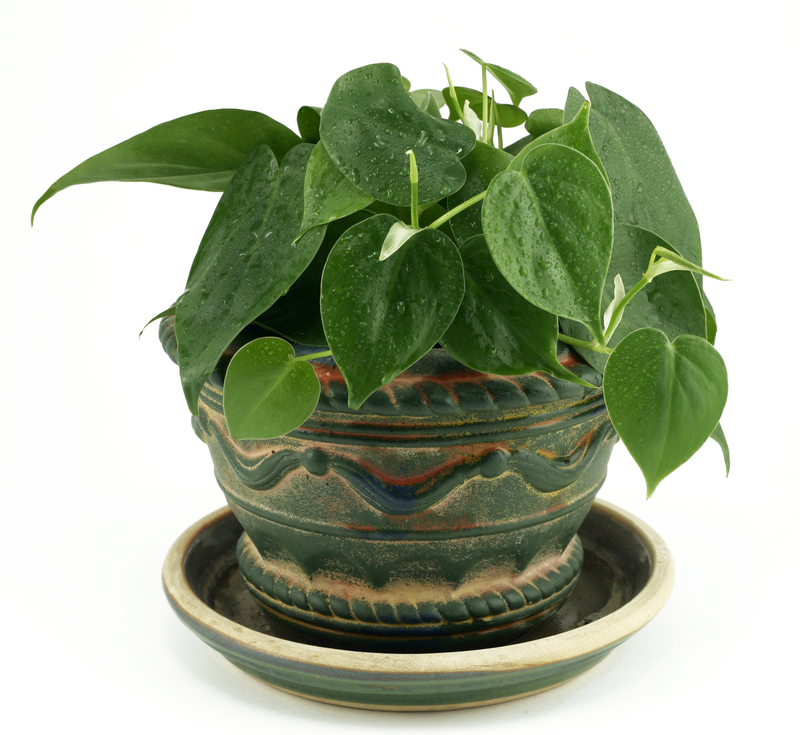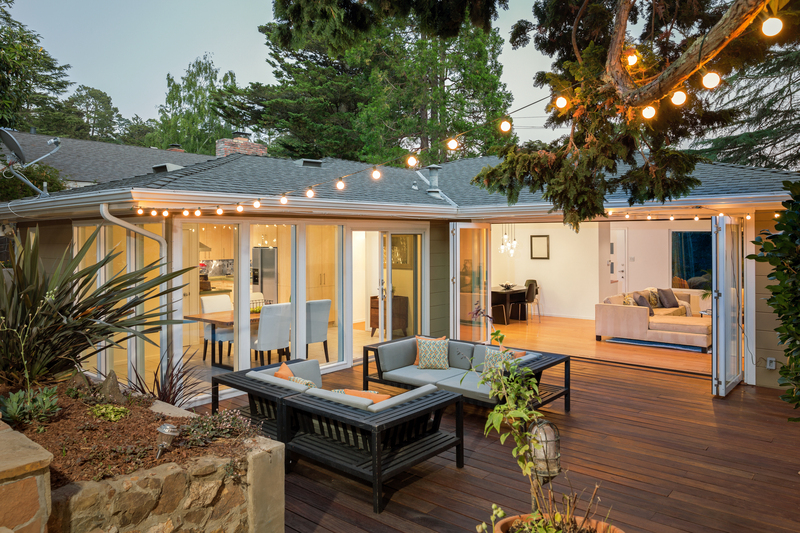Crafting Pet-Friendly Gardens with Dogs in Mind
Posted on 24/05/2025
Crafting Pet-Friendly Gardens with Dogs in Mind
Are you a dog lover who dreams of a lush, green oasis in your backyard? Transforming your outdoor space into a pet-friendly garden involves more than just planting a few shrubs. It's about creating an environment that's safe, engaging, and enjoyable for both you and your furry companions. In this comprehensive guide, we'll walk you through the essentials of crafting gardens tailored for dogs, ensuring a harmonious sanctuary for the entire family.

Why Create a Dog-Friendly Garden?
Welcoming dogs into your garden introduces a unique set of considerations and opportunities. Our canine friends love to explore, play, and sometimes, dig. A thoughtfully designed, dog-friendly backyard not only keeps your pup safe but also protects your plants and garden features, making outdoor time more pleasurable for everyone involved.
- Prevent accidental ingestion of toxic plants or chemicals.
- Create stimulating environments that reduce destructive behaviors.
- Designate space for exercise and relaxation.
- Minimize maintenance by anticipating canine habits.
Key Considerations for Pet-Safe Gardens
When designing gardens with our four-legged friends in mind, consider the following essential factors:
Safety First
Safety should be the top priority in any pet-savvy landscape. Ask yourself:
- Are there toxic plants or mulch present?
- Is there access to clean, fresh water?
- Are dangerous tools, chemicals, or small items secured?
- Are hardscape elements safe for paws and joints?
Remove hazards and make your garden a haven, not a hazard.
Creating Canine Pathways
Dogs are natural explorers and tend to patrol the boundaries of your yard or establish "dog-run" trails. Embrace this habit rather than fight it. To protect your vegetation:
- Install narrow mulch or gravel paths along fence lines where dogs like to run.
- Use stepping stones to create durable, clean pathways.
- Avoid delicate ground covers next to well-trodden dog routes.
Choosing the Right Plants
Plant selection is crucial for pet-friendly landscapes. Some common garden favorites can be toxic to dogs. For safe gardening:
-
Avoid These Toxic Plants:
- Azaleas
- Oleander
- Foxglove
- Sago Palm
- Daffodils
- Tulips
- Hydrangeas
-
Dog-Safe Alternatives:
- Marigolds
- Sunflowers
- Camellias
- Snapdragons
- Bee Balm
- Rosemary
Check any plant's status using the ASPCA's Toxic and Non-Toxic Plant List before adding it to your dog-friendly garden.
Pet-Friendly Ground Covers
Lawns aren't always ideal for high-energy dogs. Claws can tear up sod, and urine patches may damage grass. Instead, consider:
- Clover or artificial turf for durability and comfort.
- Moss or creeping thyme for hardy green cover that stands up to paws.
- Mulch (avoid cocoa mulch, which is toxic--use pine or cedar instead).
- Pea gravel, which drains well and is gentle on canine feet.
Shade and Shelter
Just as humans need sun protection, dogs benefit from cool, shaded retreats. Integrate these features:
- Trees or tall shrubs to provide summer relief.
- Fabric shade sails or patio umbrellas in open yards.
- Dog houses or raised platforms for napping and surveying their domain.
Designing Functional Zones for Canine Comfort
Great dog-friendly gardens cater to your pet's instincts and needs by zoning the yard into specific areas:
The Digging Pit
If your pup loves to dig, rather than endless scolding, offer an approved spot for this activity:
- Create a dog digging box with sand or loose soil.
- Bury toys and treats to encourage digging where you want it.
This not only protects your flower beds but also provides mental and physical stimulation for your furry friend.
Play Spaces and Exercise
Keep your dog active and happy by including:
- Open lawns or artificial turf areas for fetch and frisbee games.
- Agility obstacles - simple tunnels, ramps, or weave poles.
- Sturdy perennials or shrubs that double as natural hurdles for jumping.
Water Fun
Many dogs love to splash. Install a small pond, splash pool, or fountain, but ensure:
- Water sources are shallow and easy for your dog to exit.
- Water is changed or filtered regularly to prevent algae and bacteria.
- There's no risk of accidental drowning (especially for puppies or small dogs).
Relaxation Retreats
Every dog enjoys lazy afternoons. Provide comfort and peace with:
- Cushioned outdoor dog beds in shaded areas.
- Low decks or porches for resting and people-watching.
- Screened-off quiet zones for naps, away from busy garden activity.
Materials and Hardscaping for Dog-Friendly Backyards
When building and landscaping, select materials that are both functional and safe for dogs:
- Stone, brick, or concrete pavers for paws-friendly walkways and patios.
- Avoid sharp or jagged rocks that could injure sensitive paw pads.
- Enclose compost bins and tool sheds to prevent accidental canine access.
- Use non-toxic, pet-safe paints and sealants on fences or structures.
- Install secure, escape-proof fencing to keep your dog safe within the boundaries.
Maintenance: Keeping Your Garden Dog-Proof
Even the most beautifully designed dog-safe gardens require regular care to ensure safety and enjoyment for everyone.
Routine Inspections
- Check for and replace any chewed or damaged plants.
- Remove weeds and debris that could conceal hazards or pests.
- Repair fences or gates promptly to prevent escapes.
Safe Fertilizers and Pest Control
- Use organic fertilizers and natural pest repellents whenever possible.
- Avoid slug pellets, ant powders, and rodenticides, which can be deadly to pets.
- Ensure chemicals are stored well out of reach.
Dealing with Dog Waste
- Clean up after your dog daily to prevent odor, pests, and burnt grass spots.
- Consider a dedicated potty area with easy-to-clean gravel or mulch.
- Install dog-friendly composters (never use waste on edible crops).
Enhancing Your Dog-Friendly Outdoor Paradise
A pet-friendly garden isn't just about mitigating problems--it's about actively enriching your dog's life and deepening your bond. Here are ways to take your garden to the next level:
- Rotate toys and introduce novel scents or textures for sensory enrichment.
- Plant edible herbs like parsley or basil for the occasional canine treat.
- Install bird feeders or butterfly gardens for visual stimulation (ensuring these are out of reach!)
- Light up pathways with solar lamps for safe nighttime adventures.
Common Mistakes in Pet-Friendly Garden Design (and How to Avoid Them)
- Overlooking plant toxicity - Always check plant safety before purchase.
- Using cocoa mulch - Highly toxic to dogs. Opt for pine bark or cedar mulch instead.
- Neglecting fencing integrity - Ensure fences are high enough and buried if you have a digger.
- Ignoring water bowl hygiene - Refresh outdoor water daily, especially in summer.
- Leaving tools and chemicals unsecured - Store safely away after every gardening session.
Pet-Friendly Garden Design Checklist
- Assess existing hazards and remove toxic plants, sharp objects, and unsafe chemicals.
- Designate dog-specific paths and digging areas.
- Choose robust, non-toxic plants and ground covers.
- Provide shelter, fresh water, and shaded spots throughout the yard.
- Incorporate play and exercise zones tailored to your dog's size and breed.
- Install secure fencing and gates to prevent escapes.
- Opt for pet-friendly hardscape materials that are gentle on paws.
- Commit to routine garden inspections and maintenance.

Pet-Friendly Gardens for Dogs: Frequently Asked Questions
What garden plants are safe for dogs?
Many popular garden plants, like marigolds, camellias, snapdragons, sunflowers, and rosemary, are generally considered non-toxic to dogs. Still, each dog is different, and it's best to supervise and double-check using resources like the ASPCA database to avoid accidental poisoning.
How can I prevent my dog from digging up my flower beds?
Provide a designated digging area filled with soft sand or soil and encourage your dog to dig there by hiding toys or treats. Physical barriers, like low fencing or raised beds, can also protect delicate gardens.
What's the best ground cover for a backyard with dogs?
Clover, artificial turf, mulch (pine or cedar), and pea gravel are all excellent options. Avoid cocoa mulch, as it's toxic, and steer clear of sharp rocks. These alternatives hold up well under paws and urine.
How can I make my garden more engaging for my dog?
Add agility features, rotate toys, and encourage scent games using safe herbs. Offer varied textures and levels in your landscape, using decks, tunnels, and pathways to cater to your dog's curiosity and play instincts.
Conclusion: Sharing Your Green Space with Your Best Friend
With the right design, you can enjoy a flourishing garden that both you and your canine companion love. Building a pet-friendly garden for dogs requires a balance of safety, practical landscaping, and creative enrichment. By choosing non-toxic plants, sturdy materials, secure boundaries, and playful features, your backyard becomes a true paradise for every family member--furry or otherwise. Embrace the journey, and discover how your garden can bloom into a shared adventure under the open sky.
If you're ready to create your own dog-oriented garden retreat, use these tips and enjoy watching your dog--and your garden--thrive together!

